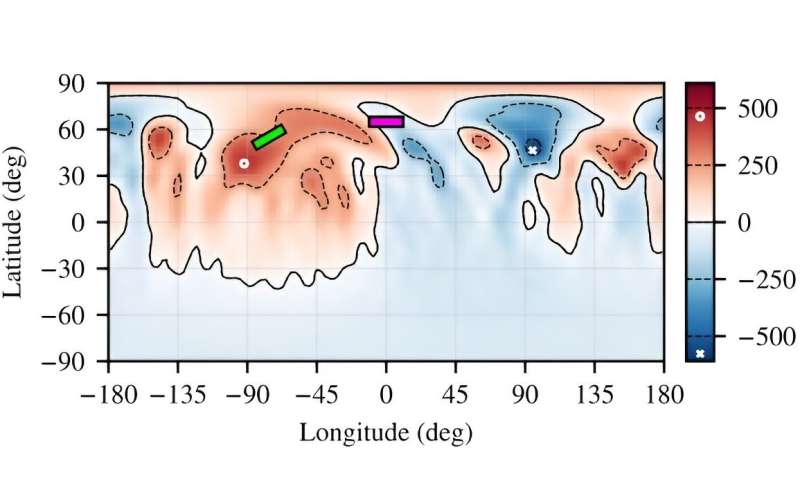August 7, 2024 report
This article has been reviewed according to Science X's editorial process and policies. Editors have highlighted the following attributes while ensuring the content's credibility:
fact-checked
preprint
trusted source
proofread
Researchers investigate coronal mass ejection on the star AB Doradus

Researchers from Leiden University in the Netherlands have conducted a study of coronal mass ejections on a young solar-type star known as AB Doradus. Results of the new research, published August 1 on the pre-print server arXiv, could provide more insights into the nature of these eruptive events.
Coronal mass ejections (CMEs) are huge eruptions of magnetized plasma from the sun and stars. Given that solar-like stars can be substantially more magnetically active than the sun, they are expected to exhibit even more frequent and energetic CMEs.
However, detecting stellar CMEs is challenging and astronomers seek for indirect evidence of such events using various methods, for instance, identifying coronal dimmings—strong but temporary reductions of extreme-ultraviolet and soft X-ray emission.
It is assumed that when CMEs propagate, evacuated mass behind the CME shock front do not contribute, or contribute less to X-ray and extreme-ultraviolet coronal emission, generating a dimming in the light curves.
AB Doradus, or AB Dor for short (also known as HD 36705) is a rapidly rotating young solar-mass star located some 49.5 light years away. The star is part of a quadruple system, has a strong magnetic field, a rotation period of approximately 0.51 days, and its age is estimated to be 120 million years.
Previous observations have found that AB Dor is a flare star showing periodic increases in activity, and that it has a greater number of star spots than the sun. Moreover, coronal dimming events have been detected on this star, suggesting the presence of coronal mass ejections.
Now, a team of astronomers led by Leiden University's Markus Strickert investigate the presence of CMEs on AB Dor. For this purpose, they conducted a parametric study with 21 simulations of CME events on this star, at high latitudes.
It turned out that half of the modeled events resulted in eruptive CMEs, with the other half leading to confined CMEs. It was found that CMEs initiated in open regions were more likely to be eruptive compared to those initiated in closed regions.
Furthermore, the study found that four eruptive CMEs from closed regions had high free magnetic energies of at least 300 decillion ergs. In general, CMEs in closed-field regions exhibited lower kinetic energies, given that part of the CME energy was expended to overcome magnetic tension and break open the overlying field.
Summing up the results, the authors of the paper note how their research improves our understanding regarding the occurrence of CMEs on stars like AB Dor.
"Our work explains how eruptive CMEs such as those observed by Veronig et al. (2021) may occur even in stars such as AB Dor whose strong overlying magnetic fields should lead to more confined CMEs," the researchers conclude.
More information: K. Markus Strickert et al, High-latitude coronal mass ejections on the young solar-like star AB Dor, arXiv (2024). DOI: 10.48550/arxiv.2408.00637
Journal information: arXiv
© 2024 Science X Network





















